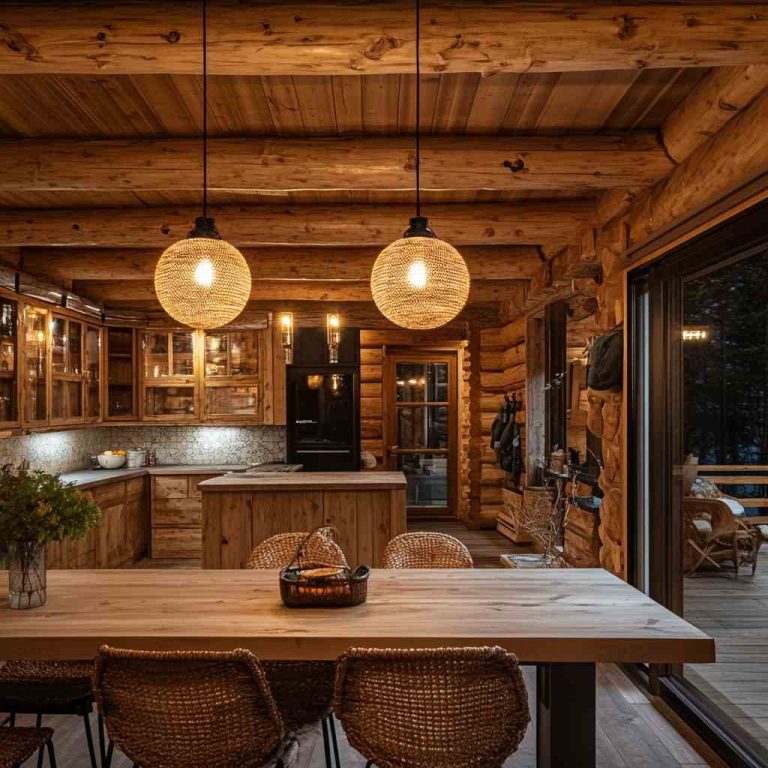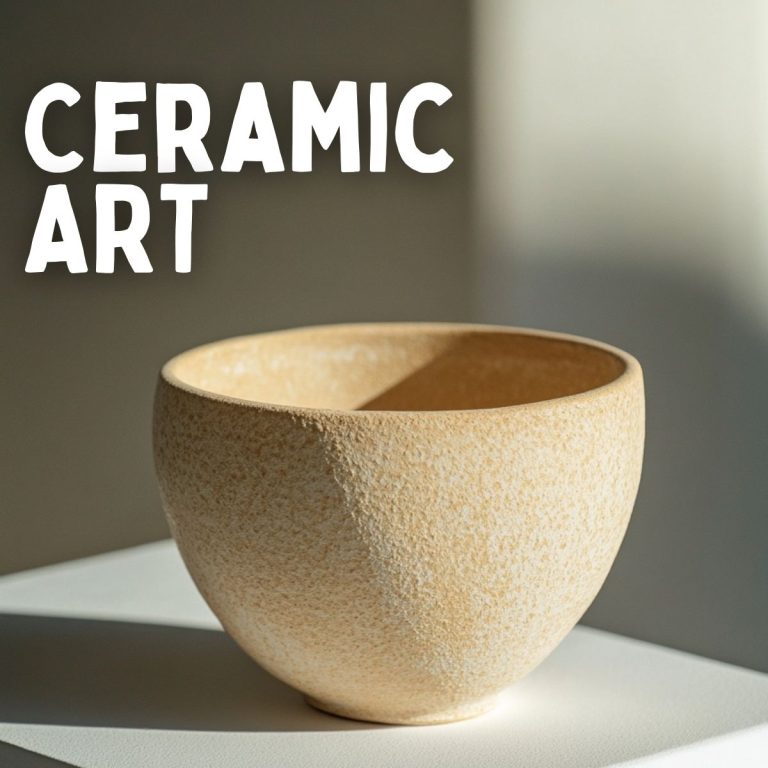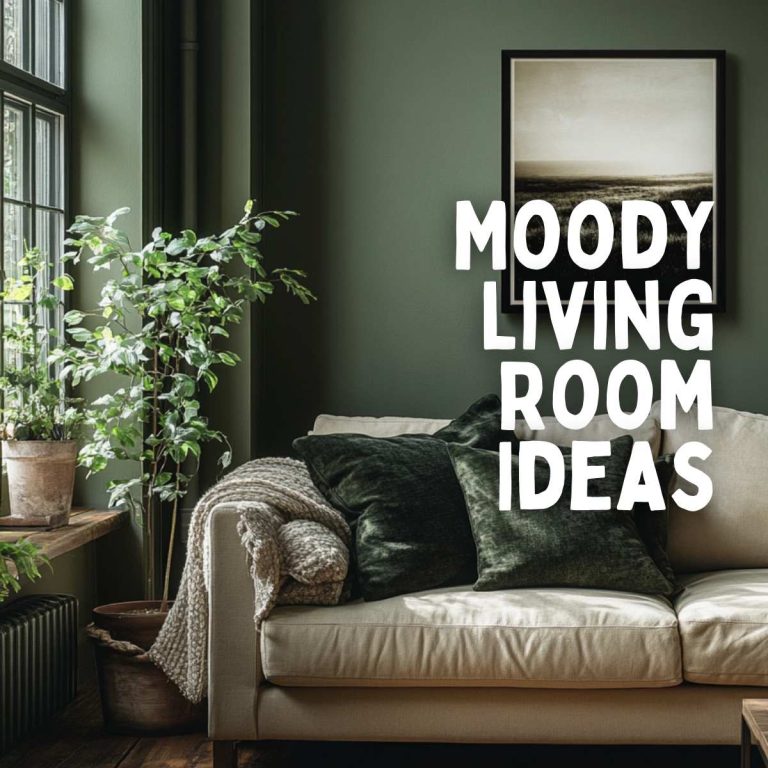Small Living Room? Here’s How Stained Glass Decor Can Add Charm Without Clutter
Decorating a small living room can be a balancing act. You want style and personality, but you also need to maintain a sense of openness and lightness. Overdo it with bulky furniture or loud decor, and the space quickly feels cramped. The solution? Incorporate design elements that are both visually striking and spatially efficient. Enter stained glass—a decorative feature that’s long associated with grandeur but surprisingly well-suited to small, modern spaces.
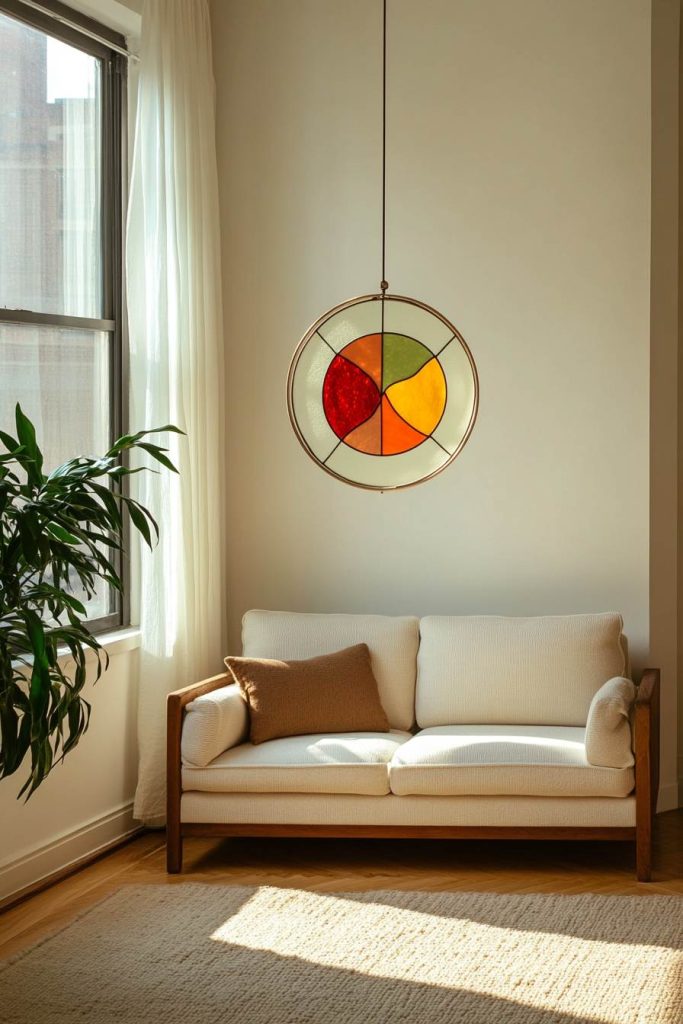
Stained glass is no longer confined to cathedrals or century-old mansions. When thoughtfully integrated, it can add color, light, texture, and charm to your living space—without taking up a single square inch of floor space.
Understanding the Appeal of Stained Glass
A Brief History and Evolution of Stained Glass in Interior Design
Stained glass has been around since at least the 7th century, most famously used in Gothic cathedrals across Europe. Initially revered for its spiritual and aesthetic symbolism, stained glass later became a fixture in Victorian homes, often found in entryways, transom windows, and decorative panels.
In the 20th century, designers like Frank Lloyd Wright and Louis Comfort Tiffany reimagined stained glass for the modern home. Today, the trend has resurfaced, not just as a throwback, but as a fresh, creative tool for homeowners looking to add unique character to their interiors.
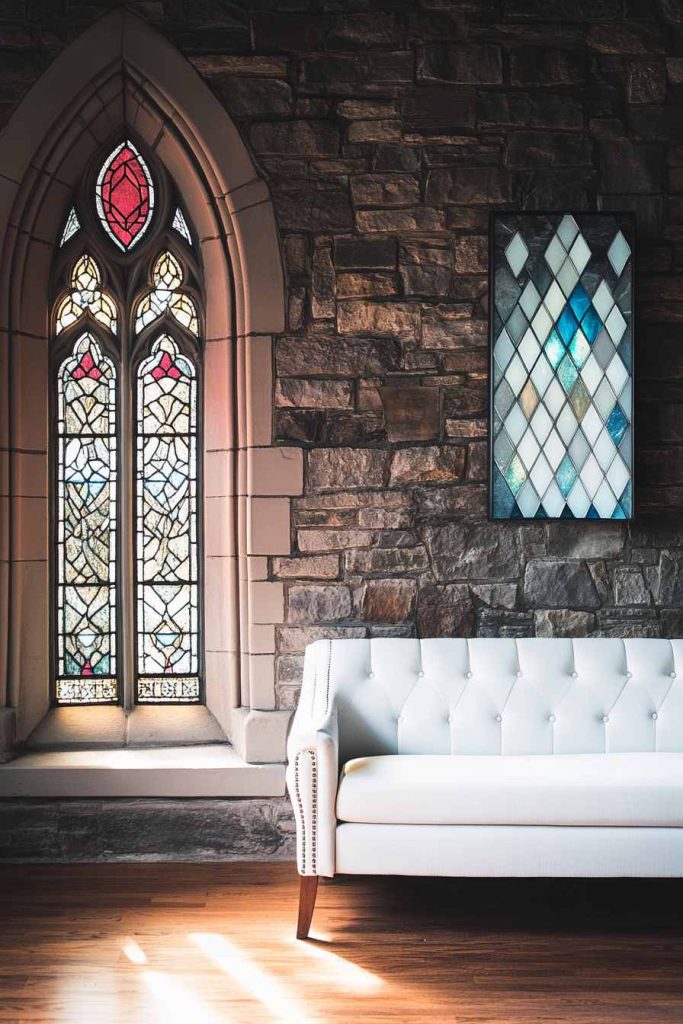
Why Stained Glass is Making a Comeback in Modern Homes
Modern stained glass doesn’t necessarily mean ornate floral designs or religious iconography. Contemporary styles include geometric patterns, clear textured glass, ombré fades, and minimalist silhouettes. These variations allow stained glass to blend into a wide range of décor—from boho chic to Scandinavian minimalism.
The Psychological Impact of Light, Color, and Transparency
Stained glass plays with natural light, softening and refracting it into gentle hues that can dramatically affect mood and ambiance. Studies show that color and light both influence psychological well-being. Blues and greens tend to calm, reds and yellows energize. Using these strategically can transform how a room feels, making even the smallest space more pleasant and dynamic.
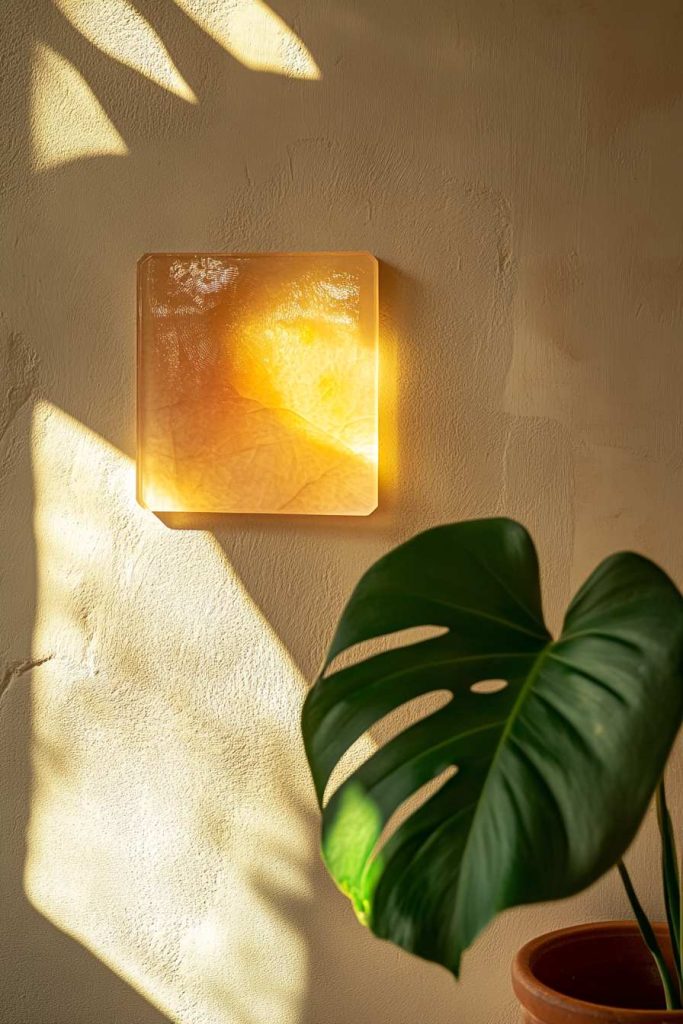
Stained Glass for Small Spaces – Why It Works
Visual Depth Without Bulk
One of the great challenges of decorating a small space is adding visual interest without adding physical clutter. Stained glass panels—whether mounted, hung, or inserted—provide dimension and depth without occupying valuable real estate.
Light Enhancement Without Additional Fixtures
Rather than adding another lamp or overhead fixture, stained glass utilizes the light already present. Whether it’s sunlight streaming through a window or light bouncing off a nearby wall, stained glass maximizes illumination by diffusing and reflecting it in a colorful way.
Style Statement Without Consuming Floor Space
You don’t need a coffee table or oversized art piece to make a design statement. A single piece of stained glass mounted in a window or framed on the wall can create a high-impact focal point without cluttering the room.
Customization Options to Fit Any Room Size
From small sun catchers to full window panels, stained glass can be scaled to your specific space. Whether you’re in a studio apartment or a compact condo, you can find or commission a piece that perfectly fits your needs and your style.
Creative Ways to Use Stained Glass in a Small Living Room
Stained Glass Window Panels
One of the most traditional yet space-efficient uses is installing stained glass directly in a window frame. It can replace an existing pane or be added as an interior panel. It not only enhances the view but also diffuses light beautifully across the room.
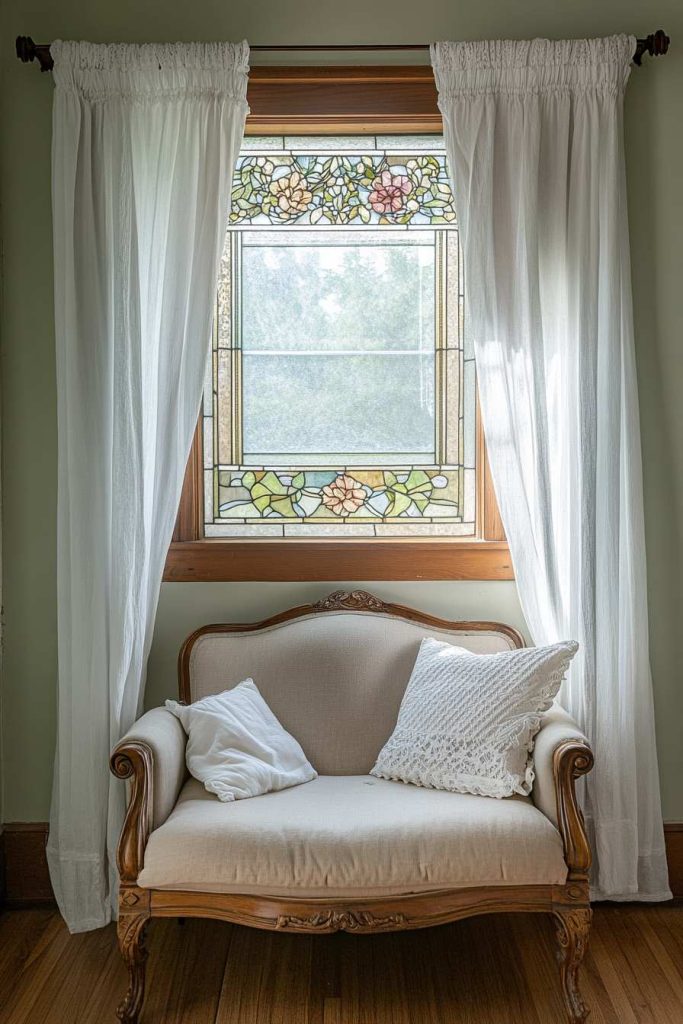
Hanging Sun Catchers
These lightweight, often circular or geometric glass pieces hang in windows using small hooks or suction cups. They’re easy to swap out and reposition, making them ideal for renters or those who like to change decor seasonally.
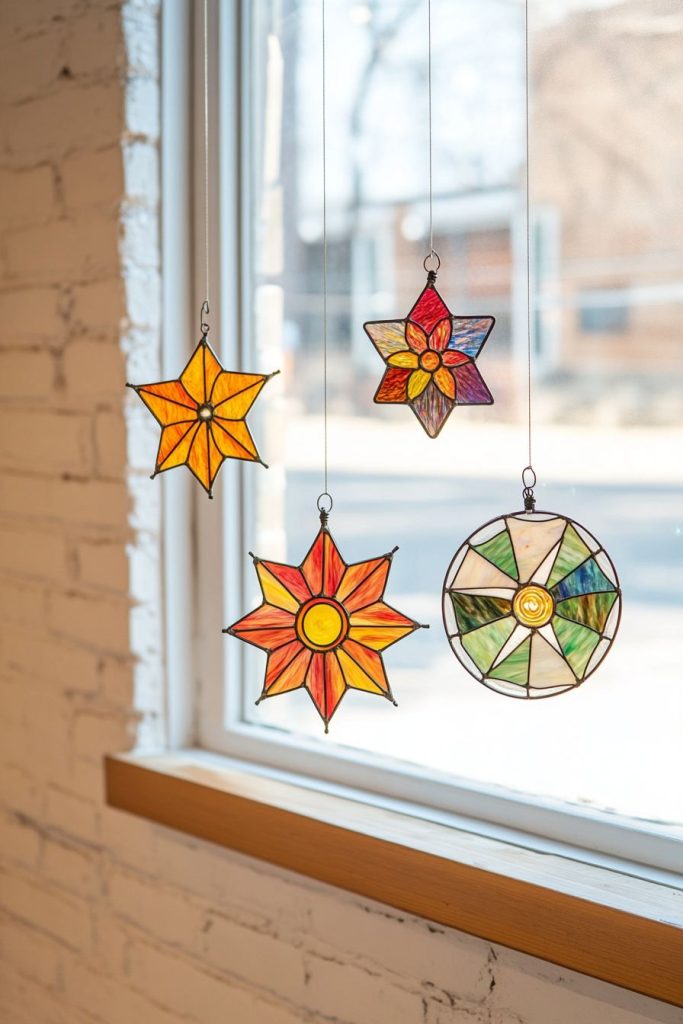
Stained Glass Room Dividers
Think of slim panels set within open shelving or freestanding screens. These allow for subtle separation between spaces—say, between a sitting area and dining nook—without creating a hard barrier. The light still flows, and the colors create a warm, artistic transition.
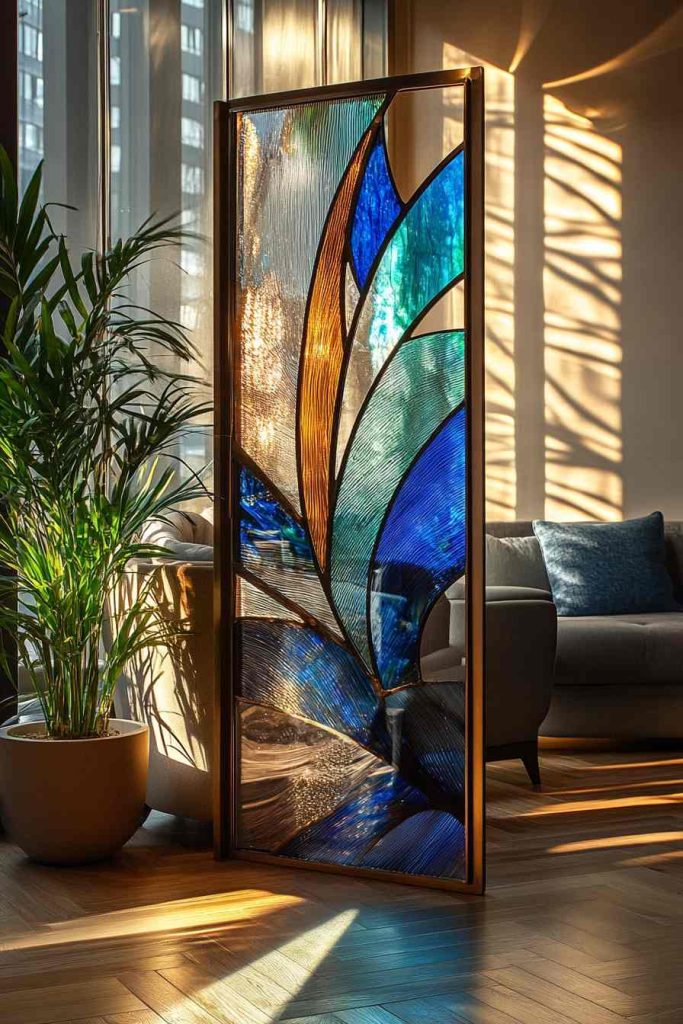
Fireplace Screens with Stained Glass Insets
Even if your fireplace is decorative rather than functional, a stained glass screen can turn it into a gorgeous focal point. Choose a motif that complements your living room’s palette for extra cohesion.
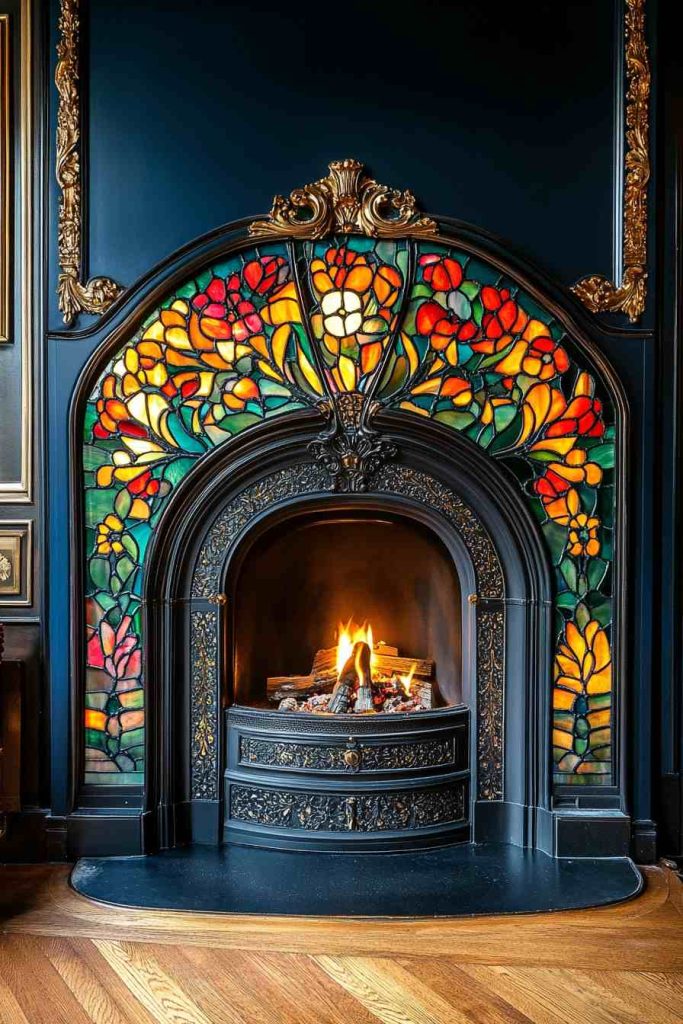
Cabinet Doors and Built-in Shelving with Stained Glass
Replace clear or opaque cabinet glass with stained alternatives. This works beautifully for built-in bookshelves, media consoles, or corner units. It allows partial concealment while adding a splash of color and texture.
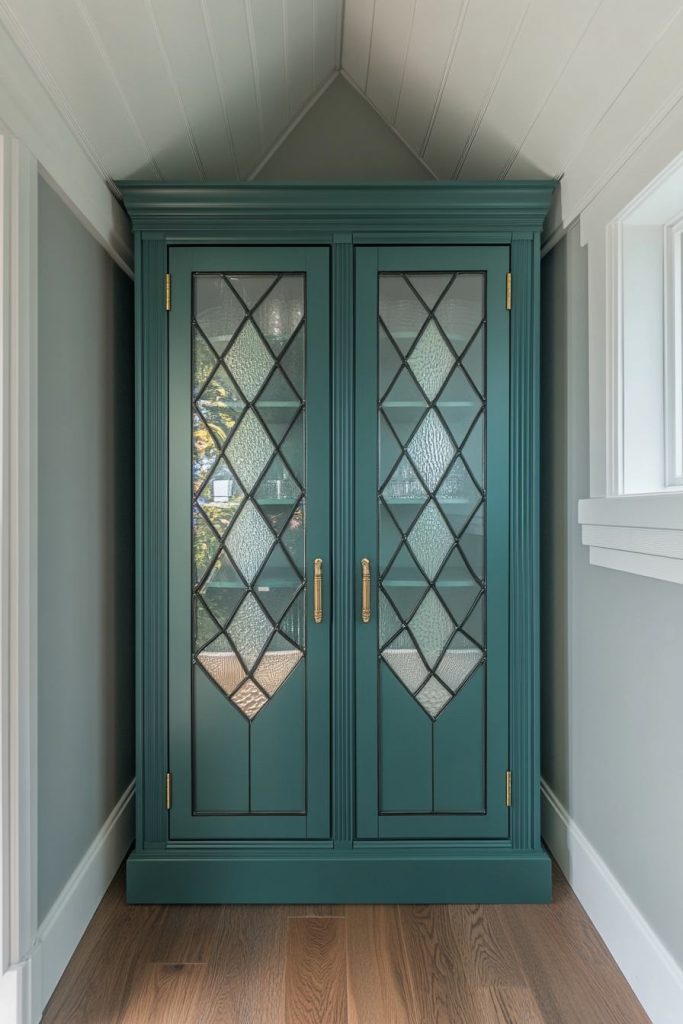
Stained Glass in Light Fixtures
Tiffany-style lamps or pendant lights with stained glass shades provide functional lighting while acting as decorative statements. They’re especially effective in creating a cozy ambiance in the evenings.
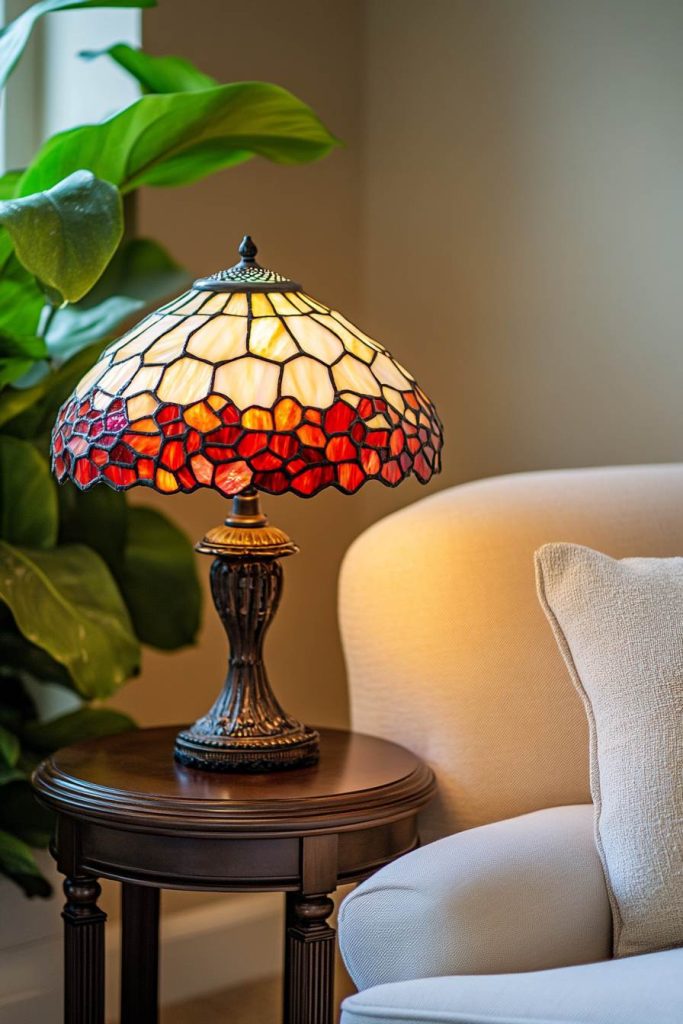
DIY Framed Stained Glass Wall Art
For a more flexible approach, mount stained glass panels in wooden or metal frames and hang them like art. This is ideal for renters or those not ready to commit to permanent installations.
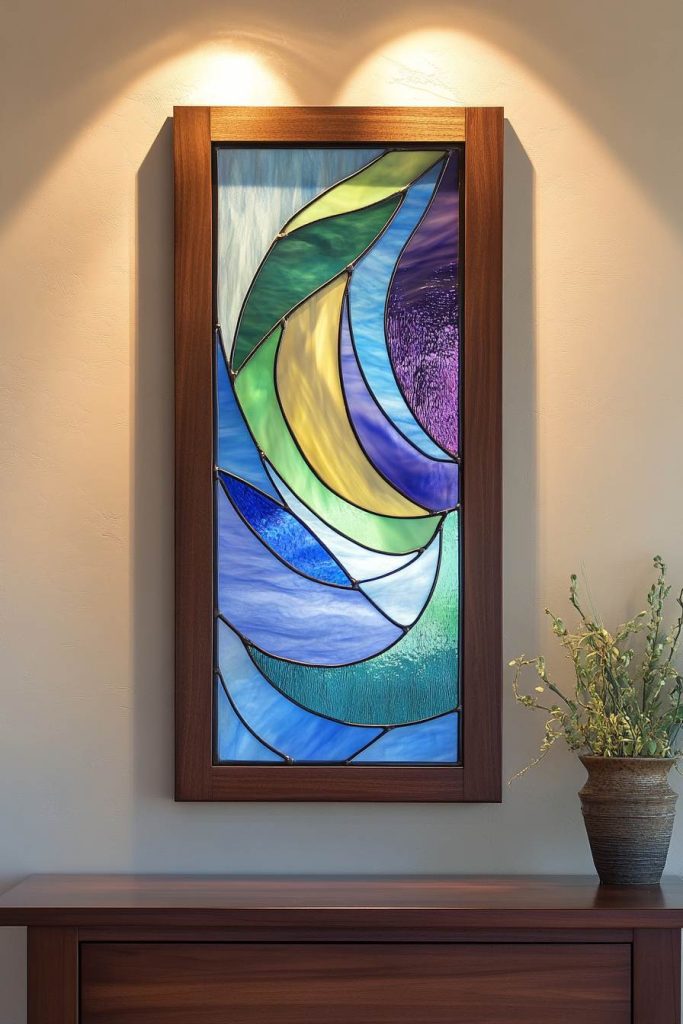
Corner Accent Panels or Niche Inserts
In tight spaces where traditional decor won’t fit, a custom glass panel inserted into a corner or wall niche can make an otherwise unused area pop with personality.
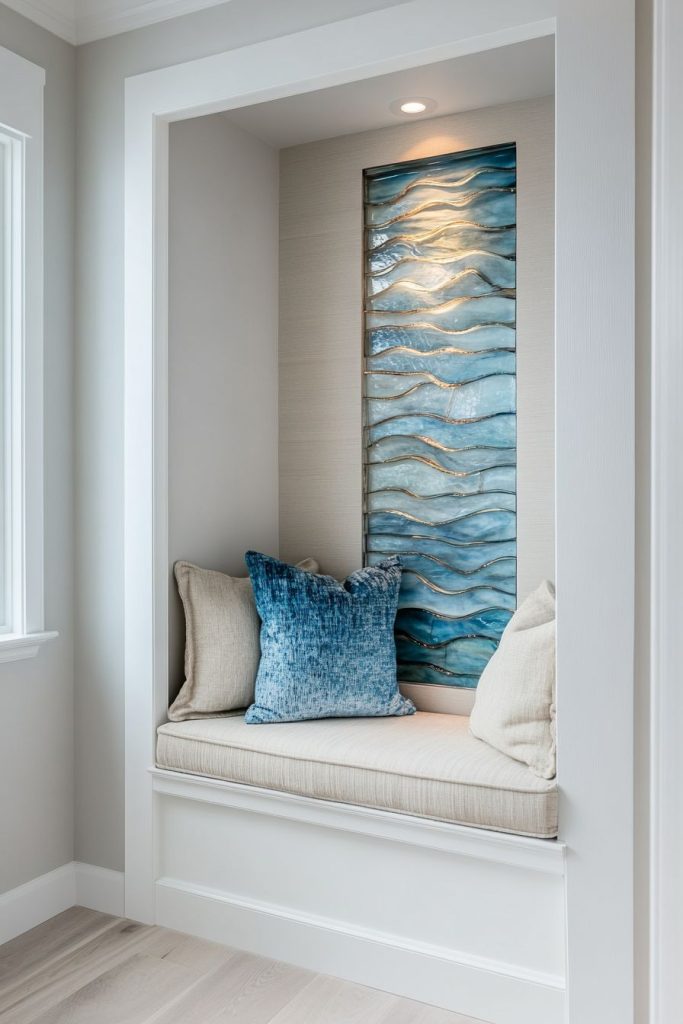
Style Considerations
Choosing Between Traditional, Art Nouveau, and Modern Designs
Your choice of stained glass should reflect your room’s overall style. Victorian homes may lean toward intricate floral patterns, while urban lofts might benefit from abstract or geometric designs. Art Nouveau panels with flowing lines suit eclectic or bohemian interiors.
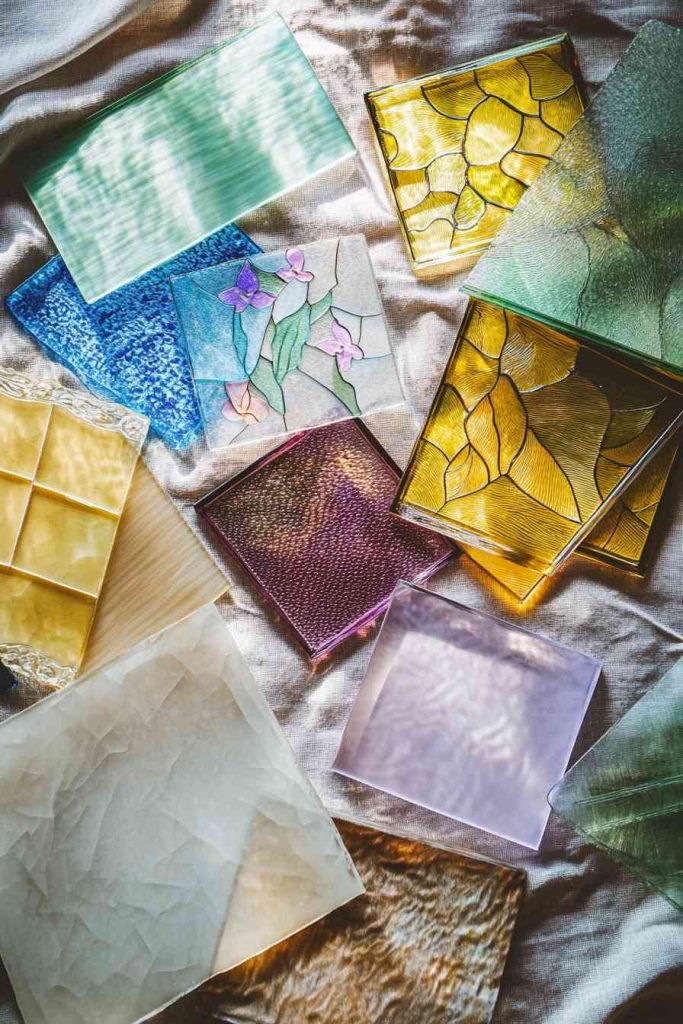
Coordinating Stained Glass with Existing Color Palettes
Pick up on accent colors already present in your furnishings or textiles to create harmony. Alternatively, use complementary colors to introduce contrast and drama.
Framing and Installation Options
Metal frames provide a clean, modern edge, while wooden frames lend warmth and a traditional feel. Frameless or floating installations give a sleek, contemporary finish and can be mounted directly on glass or walls.
Opacity vs. Transparency
Clear textured glass adds interest without darkening a room. Opaque designs offer privacy but may reduce light—ideal for bottom window panes or street-facing windows.
Functional Benefits Beyond Aesthetics
Privacy Without Curtains or Blinds
In urban settings, window-facing apartments often require privacy solutions. Stained glass can provide visual blockage while still allowing natural light to flow in, eliminating the need for heavy curtains.
Softening Harsh Natural Light
If your room faces west or gets intense afternoon sun, stained glass can filter and soften the light, reducing glare and heat.
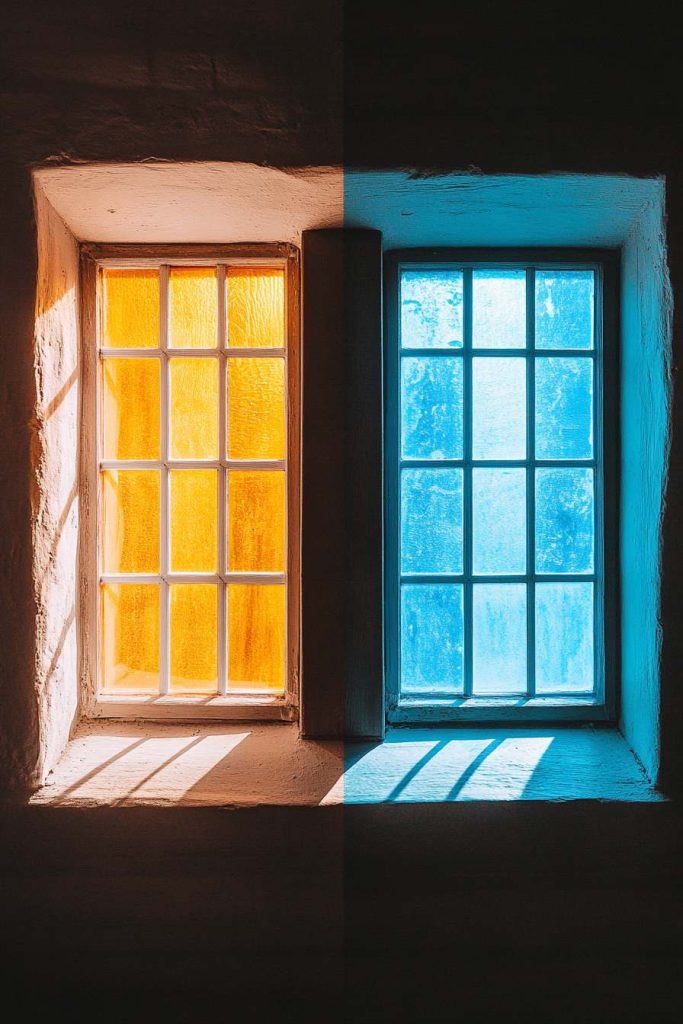
Concealing Structural Flaws or Ugly Views
If your window overlooks an alley or a brick wall, stained glass can turn that visual disadvantage into an artistic asset.
Space-Saving Tips for Integrating Stained Glass
Vertical Elements: Going Up, Not Out
Tall, narrow panels draw the eye upward, creating the illusion of height and openness. Consider tall hanging panels in corners or next to windows to elongate the visual field.
Multi-functional Decor
Screens that double as art, light fixtures that also serve as focal points—look for pieces that pull double duty to conserve space and maintain cohesion.
Using Mirrors and Glass Together
Pair stained glass with mirrors to double the impact and enhance light distribution. For example, a stained glass panel hung in front of a mirror can add depth and radiance.
Installing Sliding or Folding Panels
Sliding stained glass doors or folding screens can be used to divide spaces on demand. Unlike solid partitions, they keep rooms feeling open and dynamic.
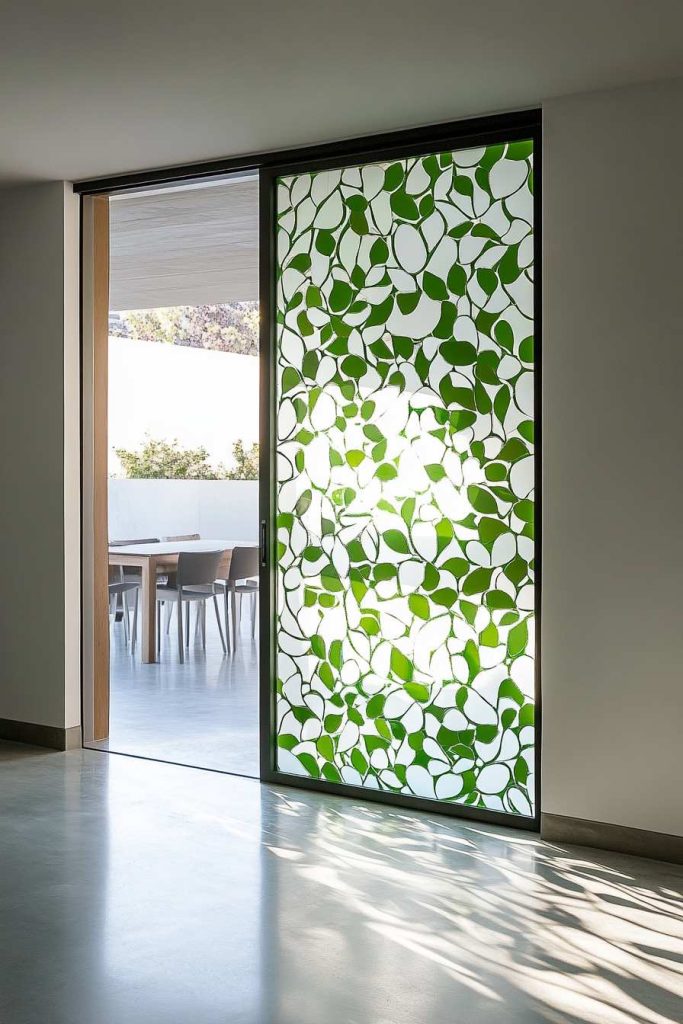
Maintenance, Cleaning, and Durability
How to Clean Stained Glass Safely
Use a microfiber cloth with a solution of warm water and a mild soap. Avoid abrasive cleaners and scrubbing tools, which can damage both the glass and the soldered joints.
Long-Term Care and Protection
Install UV-resistant film or coatings if the glass receives prolonged sun exposure to prevent fading. Occasionally inspect the lead lines for wear or corrosion, especially on antique pieces.
Repairs or Replacements
Many glass artists offer repair services. Even cracked panels can often be restored, and individual pieces can be re-soldered or replaced without scrapping the entire work.
Where to Source Stained Glass Decor
Vintage and Antique Stores
These are treasure troves of unique, aged pieces full of character. Look for items with intact soldering and minimal fading.
Local Artisans and Commissioned Work
Commissioning a custom piece ensures a perfect fit and style for your space. Many artisans will visit your home or work from photographs to design something tailored.
Online Marketplaces
Websites like Etsy, eBay, and Chairish feature both vintage and contemporary stained glass panels, often with detailed customization options.
DIY Kits
For the crafty, stained glass kits offer a hands-on way to create personalized panels. Just ensure proper safety precautions, including gloves, goggles, and ventilation.
Real-Life Inspiration and Mini Case Studies
Urban Apartment with Boho Accents
In a Brooklyn studio, a pair of hanging sun catchers adds warmth and color to a minimalist corner, drawing attention to the bay window without crowding it.
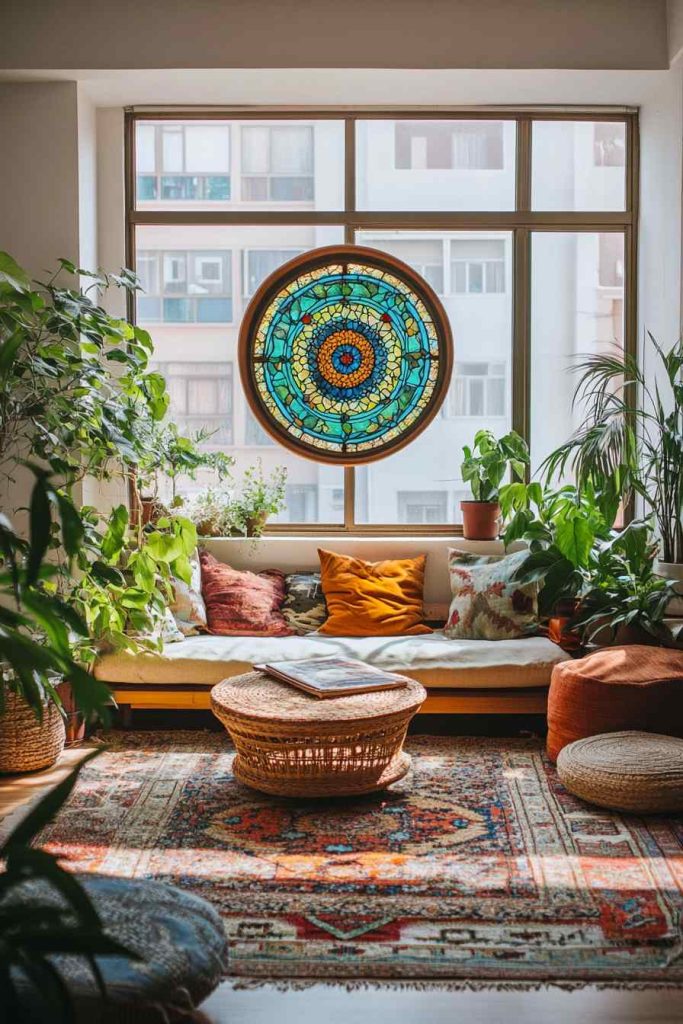
Minimalist Loft with a Single Statement Panel
A San Francisco loft features a single rectangular stained glass piece mounted between the living and kitchen areas. The modern geometric design adds visual interest while preserving open sightlines.
Classic Cottage Style with Colorful Window Inserts
In a quaint English-style cottage, a set of stained glass inserts in the lower half of the windows adds privacy and charm, complementing the floral patterns throughout the space.
Scandinavian Space Using Clear-Textured Stained Glass
A small Nordic-inspired living room uses clear, textured stained glass in its built-ins to obscure storage while keeping a clean, light-filled atmosphere.
Common Mistakes to Avoid
Overloading Small Spaces with Color
While stained glass is inherently colorful, too many vivid hues can overwhelm a room. Stick to a concise palette for harmony.
Ignoring Natural Light Direction
Consider how much sun your room gets and at what times. Position stained glass where it will interact best with available light.
Using Poorly Fitted Panels
Improper sizing or clunky frames can make stained glass look like an afterthought. Custom-fit panels ensure a seamless integration.
Prioritizing Aesthetics Over Practicality
A beautiful panel that blocks your only source of light or makes the room too dark defeats the purpose. Always consider function alongside form.
Conclusion
In small living rooms, every design choice matters. Stained glass offers a way to elevate the space, add personality, and maximize natural light without encroaching on precious square footage. Whether it’s a window insert, a sun catcher, or a custom room divider, the charm of stained glass lies in its ability to combine form and function seamlessly. With countless styles, sizes, and applications available, even the smallest living rooms can be transformed into vibrant, inviting sanctuaries.
Frequently Asked Questions
What are the best types of stained glass for small rooms?
Opt for lighter designs with clear or lightly tinted glass to maintain brightness. Geometric and minimalist patterns often work best in compact spaces.
Can I install stained glass in a rental?
Yes. Use hanging sun catchers, framed panels, or removable window films to avoid permanent changes.
How do I match stained glass with my furniture?
Pull colors from your stained glass into throw pillows, rugs, or wall art. Alternatively, use stained glass as the accent and keep other elements neutral.
Is stained glass safe in homes with kids or pets?
It can be. Secure panels firmly and place freestanding pieces out of reach. Some products use acrylic for added durability.
How much does stained glass decor typically cost?
Prices vary widely—from $30 for a small sun catcher to several hundred or more for custom panels. Vintage finds may offer the best value.


